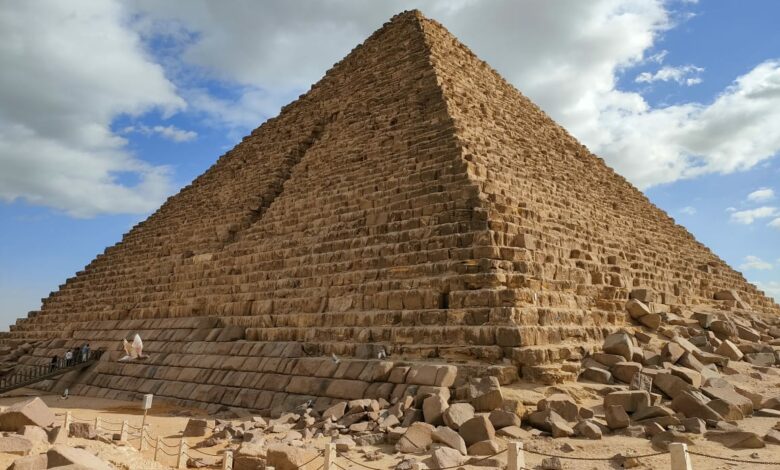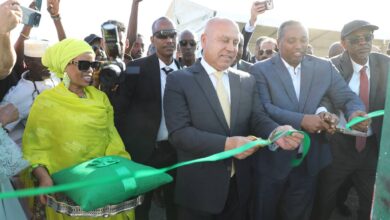
The supreme scientific committee formed to review the architectural restoration project for the Pyramid of Menkaure has turned down plans to reinstall any of the existing granite blocks around the body of the pyramid.
The Secretary General of the Supreme Council of Antiquities previously called plans to develop the Pyramids area the “Project of the Century,” through a joint Egyptian-Japanese archaeological mission.
Minister of Tourism and Antiquities, Ahmed Issa on Thursday received the report of the committee headed by archaeologist and former Antiquities Minister, Zahi Hawass, and made up of six senior scientists and specialized experts from the US, the Czech Republic, and Germany, to review the project.
The report said that the shape of the pyramid’s original covering can be inferred from the seven rows still present on the pyramid’s body.
However, the committee’s report stressed that it is impossible to ascertain the original location of any of these granite blocks, and returning them would cover up existing evidence of how the ancient Egyptians built the pyramids.
The committee also expressed its initial approval to carry out archaeological excavations to search for boat pits by the Menkaure Pyramid, “like those found next to the pyramids of Khufu and Khafre.”
The committee stipulated for these excavations that clear and detailed scientific reasons must be presented in a study to the supreme scientific committee beforehand, and that the work not just be limited to searching for boat pits or boats.
The committee supported the scientific archaeological project submitted to study and survey the Menkaure Pyramid, organize the granite blocks that make up the fallen outer covering, and carry out excavation work to uncover the rest of these blocks – in addition to cleaning and organizing the site for visit.
It further stressed not to begin or carry out any scientific or archaeological work on this project unless the manager submits a comprehensive, detailed scientific work plan for discussion by the committee, which in turn will submit a scientific report to the Ministry of Tourism and Antiquities for coordination with UNESCO, and for presentation to the Permanent Committee of Egyptian Antiquities.
The committee stressed that the work plan for this project must include the time period for implementation and the names of the archaeological members of the work team.
In addition, the work team will need to include an engineer with experience in cultural heritage and restoration, and an architect experienced in architecture.




